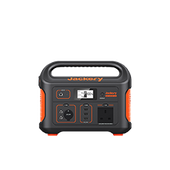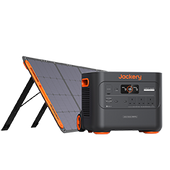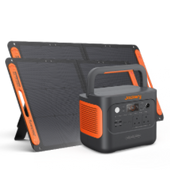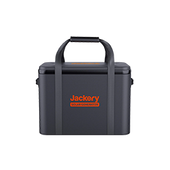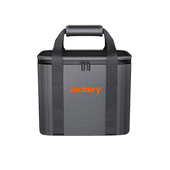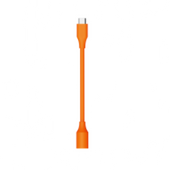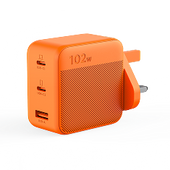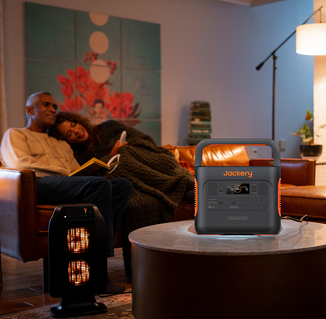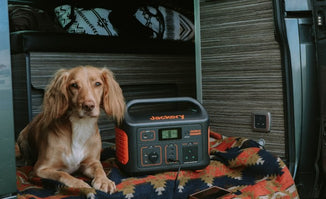A sudden power outage can occur when you least expect it. Natural disasters like Tornadoes, flooding, hurricanes, ice storms, and lightning can knock out electricity in the neighborhood. When power failure stretches for hours or even days, your refrigerator could be in a mess.
During winter, a power outage can disable your home's heating system. But you don't have to sacrifice comfort in your home. Emergency power supplies can help you avoid power outage problems. Jackery power stations are designed to provide automatic power during power loss. They are portable, quiet, and can power the most demanding household appliances.
In this guide, we'll discuss how an emergency power supply can help you during a power outage.
What is an Emergency Power Supply?
An emergency power supply aims to reduce the potential power disruption in your household. It keeps your lights and appliances running whenever there's a power outage. Also, it's vital for your business productivity.
Emergency power supplies are designed to provide power within 10 seconds of an actual outage. Generally, emergency power systems are separated from the standard power supply. They have separate panels, conduit runs, and transfer stations. The best power stations are versatile, powerful, quiet, efficient, and safe.
In recent years, solar power supplies have been making rounds as excellent emergency power sources. They are eco-friendly, silent, and have a long-term backup supply. Solar panels can collect and store enough energy to last for days or weeks. In the United States, many homeowners are now using solar panels as emergency power supplies.
How Does an Emergency Portable Power Station Work?
A power outage can cause a lot of inconveniences. If you live in an area prone to hurricanes, you should be prepared for the worst. When the grid is down, an emergency power supply takes over and provides backup power to your home. The power may come from batteries, a generator, or solar panels.
Jackery Explorer Emergency Power Supply for Home
The Explorer 1000 v2 Portable Power Station features LFP cells and upgraded ChargeShield 2.0 technology, offering diverse charging modes and 62 safety mechanisms for unparalleled durability and emergency readiness.
- Charging Several Appliances in Emergencies: The Explorer 1000 v2 portable power station provides a phenomenal 1500W output, 50% more than prior editions, to efficiently run high-demand needs, including refrigerators, ovens, portable air conditioners, etc. With USB-A/C connections and up to 100W dual PD charging, it can simultaneously charge several devices (phone, laptop), serving as the best companion for your North Wales camping.
- Multiple Recharging Options: The Emergency Charge Mode lets the Explorer 1000 v2 Portable Power Station be wholly charged in less than an hour, providing vital power backup when your battery runs low. If you want to recharge it, it will take 5 hoursfor wall charging and 12 hours for car charging. Besides, a SolarSaga 100W solar panel will take 15 hours to recharge fully.
- Higher Solar Conversion Rate: The Jackery SolarSaga 100W Solar Panel boasts a solar conversion rate of up to 25%; it is optimally designed for outdoor use and unforeseen power interruptions. The solar panel weighs about 8 lbs, is lightweight, foldable, and equipped with a convenient carry handle, enhancing its portability.
The Jackery Explorer is perfect for those who live in areas prone to hurricanes and other natural disasters. It's reliable, efficient, and can provide backup power for days.

What is the Best Backup Source for a Power Outage?
When choosing a power system, you must consider your energy needs. The first thing you should look at is the features.
Battery capacity
How long will the power stations run your devices? The output capacity shows how much power the battery can supply. It's measured in watt-hours (Wh). When choosing your unit, you should pay attention to estimated watts. Choose a battery capacity that produces enough electricity for a range of devices. To determine the best size, you should add up the wattage for each device.
Rechargeable
Jackery power stations can be used over and over again. It houses two chips to protect the battery. You can get up to 500 discharge cycles with proper care to maintain 80% of its original capacity. The manufacturer recommends that you recharge your battery every 3 to 6 months.
Portable
A portable power station gives you the freedom to explore the world without limits. Jackery power stations are compact and come in different power sizes. You can carry on road trips, camping trips, or events where power is needed. They come with USB ports and standard AC outlets to power multiple appliances at once.
Environmentally friendly
Jackery power station is solar powered - it's better for the environment. You're not harming the environment whether you use the unit at home or off the grid. Solar panels are a renewable resource that doesn't produce greenhouse gases.
How Do I Power My House in an Emergency?
Portable power stations come in different sizes and capacities. The size you choose depends on your energy needs. A larger unit can power more devices for a longer period of time.
To power your house during an emergency, you should:
Estimate usage needs
How often do you utilize emergency power in your neighborhood? To ensure the power supply is not interrupted, you should estimate the duration of outages.
Furthermore, you should consider the steady-state wattage and surge wattage. The right Jackery unit will depend on your power needs. If you target more appliances, you should choose units with higher wattage.

Hooking the power into your house
Run extension cords from the power station to specific appliances. Since the Jackery power station features different ports, you can target specific appliances.
A USB port is used to power tablets, phones, cameras, and audio equipment. USB-C is a newer technology for modern laptops.
Powering your devices
What should you power first? Prioritize those that are crucial for your health and survival. If you use a CPAP machine, you want a compatible power station. The same goes for those who need to refrigerate medication.
If you have perishables in your refrigerator, you'll need to keep them cool. You should also consider your home security system and any medical devices you have. These are just a few examples of appliances you may need to power in an emergency.
Conclusion
An emergency power supply at home keeps all the appliances running during an outage. A portable unit can power refrigerators, overhead lights, medical equipment, and more. Without power for days, the food in the fridge could get wasted. An emergency portable power station will prevent such stressful scenarios. When the power finally comes back, you won't miss a beat.
Subscribe to Jackery's newsletter to receive exclusive deals and updates! Or shop our latest arrivals to find the perfect power solution for you.





